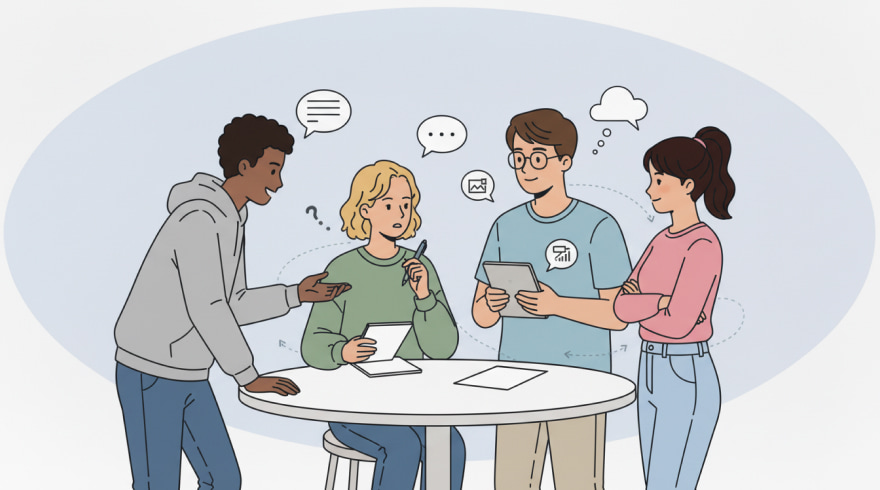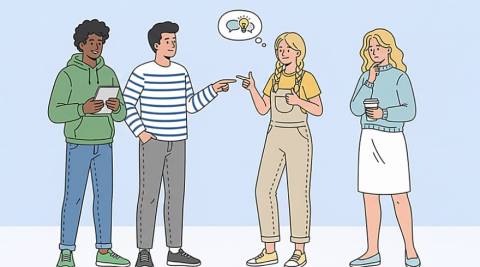Find Out Which of the Different Types of Communication Styles Fits You Best

What Are Communication Styles and Why They Matter
Every conversation is a blend of words, tone, timing, body language, and intent, and the mix changes depending on the relationship and context. When people talk about “style,” they mean the recognizable patterns that emerge through repeated interactions, like how someone negotiates, gives feedback, or navigates conflict. Recognizing patterns helps you anticipate reactions, trim misunderstandings, and shape messages that truly land. It also gives teams a common vocabulary for discussing how to collaborate without slipping into blame or defensiveness, which keeps morale high and progress steady.
Labels may feel limiting, yet they offer a helpful scaffold for introspection and coaching. Within practical frameworks, types of communication styles serve as a map that guides everyday interactions and personal growth far more reliably than guesswork. The moment you can name a style, you can intentionally choose an alternative or blend approaches, and that choice increases clarity, empathy, and consistency across situations.
Understanding patterns does not mean boxing anyone in, because style is dynamic and responsive to stakes, culture, and power. In that spirit, different types of communication styles provide a lens for diagnosing friction and recalibrating expectations during high-pressure moments. You can then align intentions and outcomes with a lighter touch, steering discussions toward shared goals while protecting trust and psychological safety along the way.
- Style awareness sharpens self-management during difficult conversations.
- Shared language reduces reactivity and speeds up decision-making.
- Adaptability nurtures inclusion by honoring diverse preferences.
The Four Core Communication Styles Explained
Most models describe four recognizable styles: assertive, passive, aggressive, and passive‑aggressive. Each has strengths and risks, and people often blend them depending on the audience and stakes. Assertive delivery emphasizes respect and clarity, passive expression avoids conflict and defers choices, aggressive speech seeks control and speed, and passive‑aggressive messaging masks disagreement with sarcasm or delay. The real craft is discerning which mix suits the moment, then pivoting with intention instead of reflexively repeating habits that create friction.
| Style | Voice | Body Language | Typical Goal |
|---|---|---|---|
| Assertive | Calm, steady, direct | Open posture, steady eye contact | Mutual respect and clear agreements |
| Passive | Quiet, hesitant, deferential | Closed shoulders, downward gaze | Harmony and avoidance of conflict |
| Aggressive | Loud, fast, forceful | Pointing, looming, sharp gestures | Control and rapid compliance |
| Passive‑Aggressive | Indirect, ironic, evasive | Mixed signals, sighs, eye rolls | Covert resistance without open debate |
When teams want outcomes that stick, 4 types of communication styles can be used as a practical framework for coaching, feedback, and role clarity during complex projects. Embedding the framework into onboarding and performance rituals normalizes reflection and experimentation instead of clinging to one habitual approach.
Leaders facilitate better dialogue when they translate patterns into specific behaviors, and they also model calm boundaries during tense decisions. In practice, the 4 types of communication give managers a shorthand for debriefs, retrospectives, and learning cycles that reward curiosity over blame.
Skillful communicators code‑switch with purpose, selecting tone and pacing that serve the shared objective rather than ego. In cross‑functional work, 4 types communication provide a versatile palette for tailoring messages to engineers, marketers, and executives so collaboration feels fluent and efficient.
Communication at Work: Culture, Tools, and Outcomes
Organizations run on conversations, and the smallest mismatch between intent and impact can stall momentum. Culture sets the default volume for honesty, and tools like chat, email, and video can either amplify connection or multiply misunderstandings. Clear norms around response time, decision rights, and documentation prevent ambiguity from spreading across tasks, time zones, and hierarchies, while rituals like standups and retros keep feedback continuous and psychologically safe.
Role clarity strengthens handoffs, but clarity alone is not enough, because interpersonal nuance shapes whether ideas are welcomed or dismissed. In fast‑moving settings, types of communication in the workplace deserve deliberate choreography so that updates, escalations, and approvals move smoothly through the right channels. When teams align on structure and tone, they convert knowledge into action without unnecessary friction.
Remote collaboration adds extra complexity, and that makes coherence even more valuable for distributed teams. With hybrid schedules, types of workplace communication must balance synchronous touchpoints with thoughtful asynchronous documentation to avoid meeting fatigue. Writing that summarizes context and choices keeps contributors aligned while preserving focus for deep work.
Managers can also map deliverables to specific cadences and mediums to improve throughput and trust. During project kickoffs, 4 types of communication can guide agreements on when to discuss, when to document, when to present, and when to debrief for learning. Clear choices about channels minimize noise, reduce rework, and accelerate delivery across complex initiatives.
- Define channel norms for updates, decisions, and risks.
- Prefer concise briefs over sprawling threads when stakes are high.
- Use debriefs to convert mistakes into shared playbooks.
Habits for Clear, Compassionate, and Strategic Dialogue
Effective communicators plan their intent, adapt their tone, and confirm understanding with check‑backs instead of assuming alignment. They also watch for nonverbal cues, regulate stress in the moment, and replace blame with curiosity to keep conversations productive. These habits are learnable, and teams that practice together build muscle memory that shows up under pressure when it matters most.
Frameworks are useful only when they inform action, so skills should be integrated into meetings, feedback cycles, and conflict navigation. In coaching sessions, 4 main types of communication can help people choose a posture that fits the audience while protecting both candor and respect. Pausing to choose language and pacing deliberately transforms difficult moments into progress checkpoints instead of showdowns.
Practice makes progress, and progress compounds quickly when feedback is specific and kind. In playbooks for managers, types effective communication are turned into concrete micro‑behaviors such as checking assumptions, summarizing agreements, and naming feelings without judgment. Those behaviors scale better than vague exhortations about being nice or being tough, because they are observable and teachable.
- Set an intention before you speak and state it explicitly.
- Match channel to complexity and urgency, then confirm next steps.
- Use curiosity, paraphrasing, and timeboxing to keep momentum.
FAQ: Practical Answers About Communication Styles
Which style is best for most situations?
Assertive delivery tends to balance honesty with respect and is often the most sustainable default. In challenging contexts that require boundaries and empathy, different types of communication styles can be blended to fit the moment while keeping relationships intact.
How do I shift my style without feeling fake?
Start by naming your goal and your audience, then choose one behavior to adjust, such as slowing your pace or asking more open questions. Small, consistent tweaks feel authentic because they align your intention with your impact rather than forcing a wholesale personality change.
Can cultural differences change how styles are perceived?
Absolutely, because norms for directness, silence, and hierarchy vary widely across regions and industries. The same phrasing can read as confident in one context and brash in another, so learning local expectations is essential for trust and effectiveness.
What’s the fastest way to de‑escalate a tense exchange?
Lower your volume, breathe, and reflect back what you heard before offering any solution. When people feel seen and understood, they soften defensiveness, making it easier to explore options that serve the shared objective.
Why do many coaches emphasize assertiveness training?
Because it combines clarity with consideration, reducing ambiguity without bulldozing. In many curricula for professional development, types of communication assertive are highlighted as a reliable foundation that supports candid dialogue while preserving mutual respect.
Latest News



